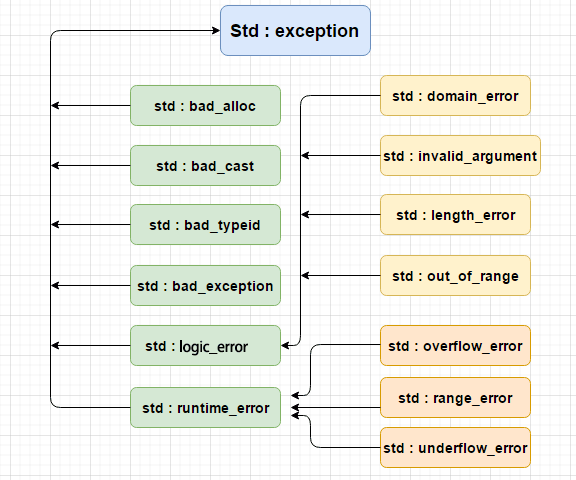【C++异常处理】
1.原理
-
即运行时通知机制,在真正导致错误的语句执行之前并且异常发生的条件已经具备时,使用自定义的软件异常来代替错误,从而阻止异常的发生。
参考 C++异常处理
2.实现
- 关键字 try、throw、catch
try{
...//省略
throw()
}
catch(){
...//省略
}
- 三种用法
-
常见用法
-
规范的异常处理
函数类型 函数名(...) throw(类型)
{
...//省略
throw(...);
}
如类型可设为string或int从而保证抛出异常类型
- 异常和继承
class triangle:public exception:
{
public:
float a,b,c,d;
triangle(){}
triangle(float a1,float b1,float c1){
a = a1;
b = b1;
c = c1;
}
void judgement() throw(exception){
if((a+b)<c||(a+c)<b||(b+c)<a)
throw exception("不是三角形")
}
}
exception是C++类库的异常标准异常类

-
try可对应多个catch
-
异常省略符 catch(...)
-
throw在catch中:①抛出新异常,②重新抛出异常
-
throw在函数中:函数抛出异常类型
void example throw(int); -
terminate() 记录错误,释放所有资源,调用abort()
-
unexpected() 记录错误并调用terminate()



 浙公网安备 33010602011771号
浙公网安备 33010602011771号